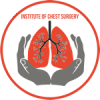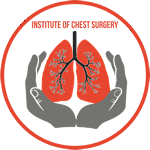What Are the Common Causes of Chest Trauma?
Chest trauma refers to injuries sustained to the chest area due to external forces, such as accidents, falls, or violent encounters. It can lead to severe complications and, in some cases, life-threatening conditions. Understanding the common causes of chest trauma and the diagnostic procedures involved is crucial for timely and appropriate medical intervention. In this article, we will explore the various factors that can cause chest trauma and delve into the diagnostic methods employed by medical professionals to assess and treat such injuries.
Common Causes of Chest Trauma
- Motor Vehicle Accidents:Motor vehicle accidents, including car collisions and motorcycle crashes, are one of the leading causes of chest trauma. The impact of a high-speed collision can exert significant force on the chest, resulting in fractures of the ribs or sternum. In more severe cases, the force may cause injuries to the lungs, heart, or major blood vessels within the chest cavity.
- Falls:Falls from significant heights or even from ground level can lead to chest injuries. Elderly individuals and young children are particularly vulnerable to such injuries, as their bones may be more prone to fractures upon impact. Chest trauma from falls can range from minor rib fractures to more serious injuries like pulmonary contusions or lung collapses.
- Assaults and Physical Altercations:Violent encounters, assaults, and physical altercations can also cause chest trauma. Blows or strikes to the chest can result in injuries like contusions, broken ribs, or damage to internal organs. In some cases, victims may not immediately realize the severity of their injuries, leading to delayed medical attention.
Common Causes of Chest Trauma (Continued)
- Sports Injuries:Participation in contact sports or high-impact activities can put individuals at risk of chest trauma. Collisions with other players, falls, or direct impacts from objects can lead to injuries such as rib fractures, sternal fractures, or lung contusions.
- Penetrating Injuries:Penetrating injuries, such as stabbings or gunshot wounds, can cause significant damage to the chest and internal organs. These injuries require immediate medical attention, as they can lead to life-threatening complications, including pneumothorax (collapsed lung) or hemothorax (blood in the chest cavity).
- Crush Injuries:Crush injuries occur when the chest is compressed between heavy objects. These injuries can cause extensive damage to the chest wall, ribs, and internal organs, often requiring emergency medical intervention.
Diagnosis of Chest Trauma
When a patient presents with symptoms suggestive of chest trauma, the first step in the diagnostic process is a thorough physical examination. The healthcare provider will assess the patient’s breathing pattern, chest movements, and any visible signs of injury, such as bruising or deformities.
Chest X-ray
A chest X-ray is a commonly used imaging technique to evaluate chest injuries. It can reveal fractures, lung contusions, or the presence of air or fluid in the chest cavity, which may indicate pneumothorax or hemothorax.
CT Scan
In cases where a more detailed assessment is required, a computed tomography (CT) scan may be performed. CT scans provide cross-sectional images of the chest, offering a comprehensive view of the internal structures and potential injuries.
Ultrasound
Ultrasound imaging is useful in assessing the presence of fluid or blood in the chest cavity and can aid in the diagnosis of conditions like hemothorax.
Electrocardiogram (ECG)
For patients who have sustained chest trauma and show symptoms of cardiac involvement, an electrocardiogram may be conducted to evaluate heart function and rule out any cardiac complications.
Blood Tests
Blood tests may be performed to assess the patient’s overall health status and screen for potential complications, such as internal bleeding or infections.
Conclusion
Chest trauma can result from various accidents, falls, assaults, and sports injuries. Prompt and accurate diagnosis is crucial for effective treatment and management of such injuries. Healthcare professionals use a combination of physical examinations and advanced imaging techniques, such as X-rays, CT scans, and ultrasounds, to evaluate the extent of the chest trauma and identify any potential complications. If you experience chest trauma or suspect any injury to your chest, seek immediate medical attention to ensure timely and appropriate care. Remember, early intervention can significantly impact the outcome and promote a faster recovery.







